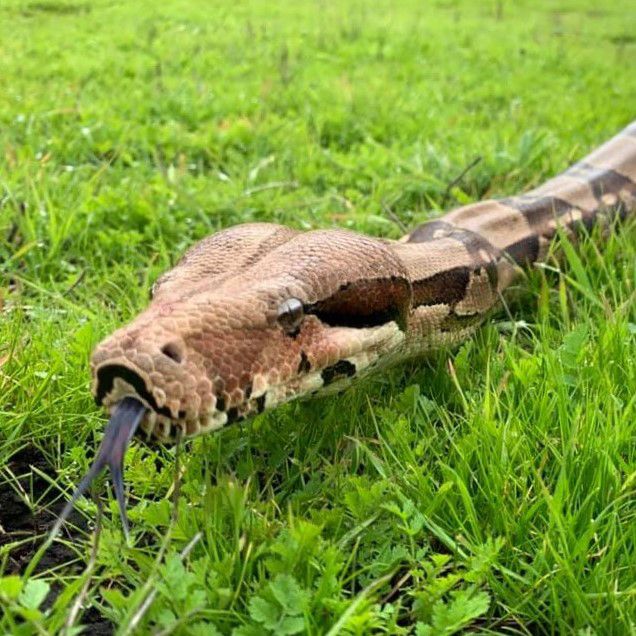Profile | Lola

-
BirthdaySex unknown, born circa 2004
-
SpeciesBoa Constrictor
Boidae -
Professor ofRainforest ectotherms
-
Field of StudyScutes, scales, and ecosystems
-
Food and Vet Care$83 per month | $996 each year
About the species
RANGE | Widely found across northern and central South America east of the Andes Mountains. The most colorful specimens generally come from the northwestern part of the range.
FUN FACTS | These snakes are NOT vipers, so do not possess any venom. They are, instead, constrictors. Like all snakes, they sense their environment by sticking out their forked tongue to collect molecules and chemical trails with scent. They bring their tongue into their mouth and into a Jacobson’s organ at the roof of their mouth. They can determine the size of an animal by using heat-sensitve receptor pits under their eyes. Once they grab their prey, they use their powerful muscles to cut off the blood supply—or occasionally oxygen—by squeezing tightly. Unlike human jaws, where only the bottom jaw moves, both the upper and lower jaw move in snakes. Their jaw bones and skull are connected by muscles, tendons and ligaments to allow significant mobility so snakes can swallow large prey whole, despite having multiple sets and kinds of teeth.
Female boa constrictors are ovoviviparous which means they do not lay eggs but actually give live birth, ranging from 20–60 babies. When boas feel threatened or are fighting, they will ball their tail up tightly to resemble another head. This distracts the predator and then the snake will bite down with their real head. They also hiss loudly enough that it can be heard 100 feet away. These boas are native to the Amazon rainforests where they use their coloration to camouflage among the branches and leaves as they wait to ambush their prey, typically rodents.
Meet Lola
Lola was originally purchased in a pet store by twin brothers for their birthday. They took care of her all through middle school and high school. When they graduated from high school, one joined the Coast Guard and one went off to college. Neither of them was able to take the snake and they hoped that their mom would take care of her for them. However, their mom was very uncomfortable with the idea of putting her hand in the tank to feed the snake or clean. So, one day she told the boys to find the snake a home or she would release it in the yard behind their apartment. It is actually illegal to release animals that are not native to a region and, knowing that Lola would not survive the cold temperatures, and that she did not know how to hunt, the brothers called us.
Likes
For reptiles, it is all about texture. Lola loves to crawl over—and through—tubes and toys. We use plastic chains to hang items for her to explore. Items that enable and encourage her to move up and down are also very appealing for this arboreal snake, such as heavy duty hula-hoops and plastic ladders.
Wishlist
-
Packing materialsheavy duty mailing tubes of various lengths and widths, plus packing boxes to fill and stack
-
Plastic chainsto hang things from and for them to climb
-
Reptile hideawaysor similar items to hide in or burrow beneath
-
Toddler toysplastic whiffle balls, bath toys, and learning toys with different shapes and textures on blocks, beads, and balls that move on plastic-coated wires or frames, especially those they can crawl through
-
Water toysby Outward Hound, Chuckit Bumper, ZippyPaws Floatiez, Kong, or even children’s bath toys like rubber ducks
-
Travel carrierto leave in enclosure for evacuation training